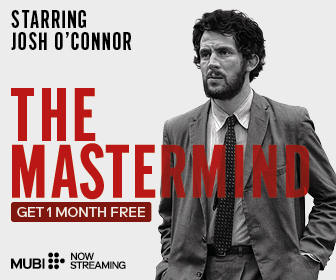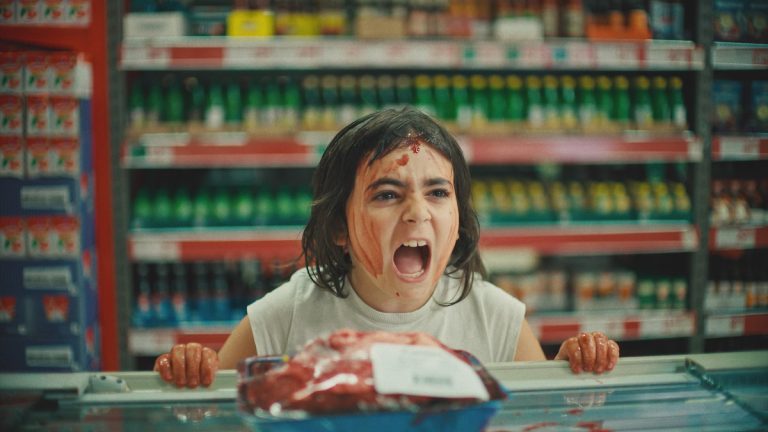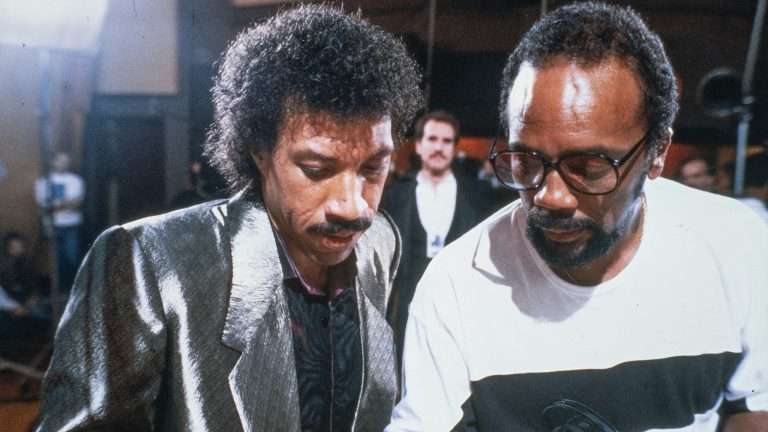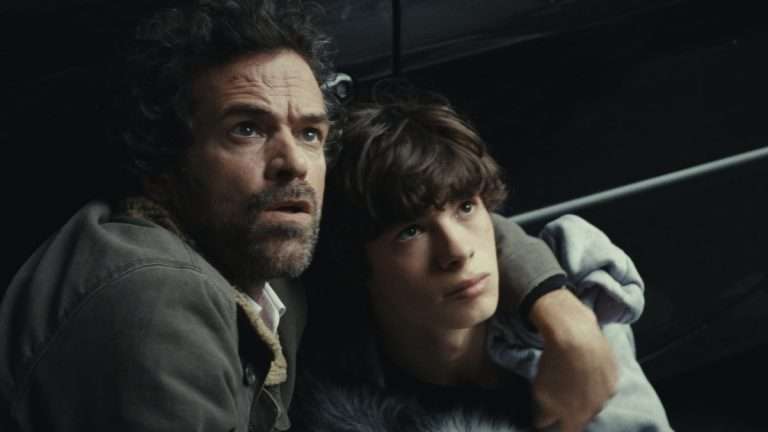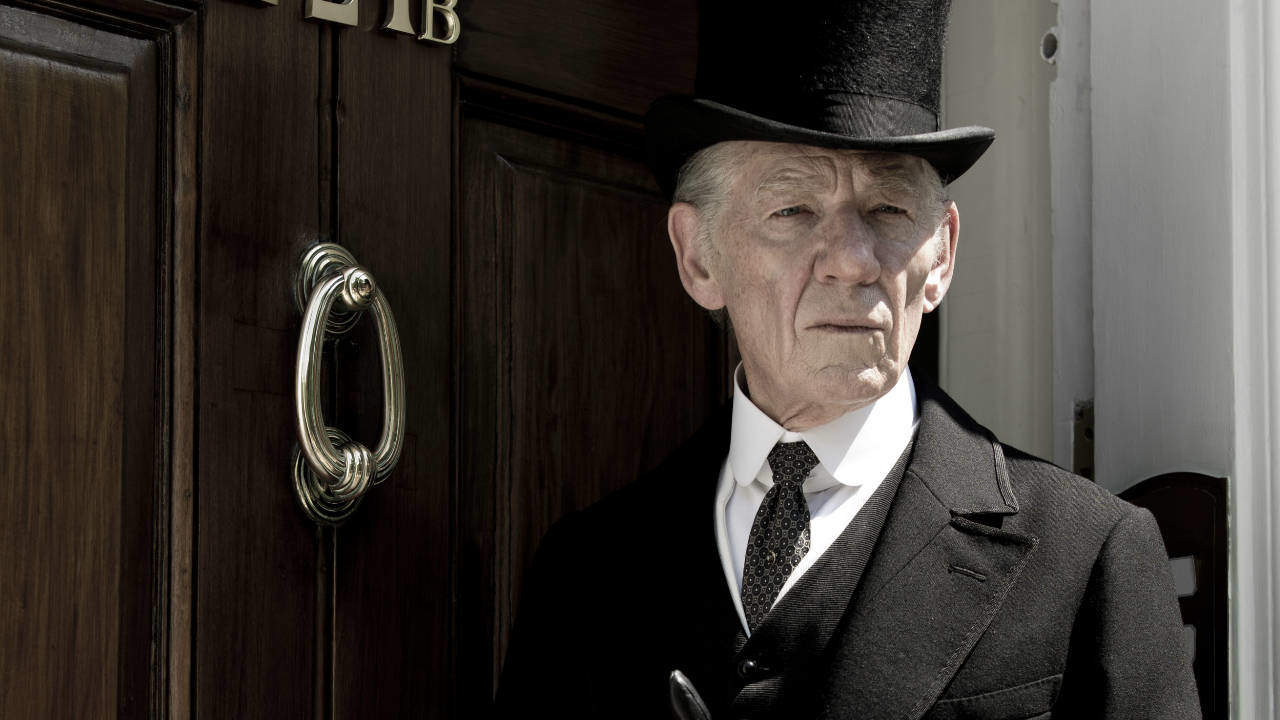Bryan Bertino’s Vicious (2025) isn’t merely a tale of curses or sinister games—it’s a deeply personal exploration of guilt, trauma, and the slow erosion of the mind. The cursed box operates less as a supernatural gimmick and more as a potent metaphor for psychological decay, festering in isolation before spiraling into self-destruction. Through Polly’s unraveling, Bertino crafts not just an effective horror film but a raw and intimate portrait of how remorse and unhealed wounds can quietly consume a person from within.
Spoilers Ahead
Vicious (2025) Plot Summary and Movie Synopsis:
Polly (Dakota Fanning) resides in an old, decaying, and ruined house, much like the state of her mind. Dishes fill the sink, her houseplants are dying, and her once creative and idealistic pursuit of her art has become stagnant. Once a highly paid student and promising artist, she is now an adult living half-awake, working a dead-end job, not attending the pottery classes she paid for, and continuing to disappoint her family. Her sister Lainie’s voicemail reminding her to get the cake for her niece’s birthday is full of quiet resentment.
Polly’s mother continues to call her with gentle nudging and reminders for an upcoming interview that she seems barely prepared for. Her interactions reveal the safe truth: that Polly is lost. Then, on one bleak winter night, an old woman (Kathryn Hunter) knocks at her door, begging for a glass of water. What begins as an act of kindness quickly spirals into something incomprehensible. The woman leaves behind a small black box and a sand timer, warning Polly she will die unless she ‘plays the game.’ Her final words, “I’m sorry for passing this on,” turned out to be both a curse and a confession.
What Does the Box Want from Polly?
The rules of the box are simple yet horrifying: Polly must place three offerings into it, something she hates, something she needs, and something she loves, before the sand runs out. But each choice exposes a truth she’s long avoided. When Polly first tries to drop in a cigarette pack, the box rejects it. While others might scold her for smoking, she realizes she doesn’t truly hate it. It’s her coping mechanism. The box seems to feed on honesty, forcing her to confront her lies and delusions. Soon, she begins hearing voices, voices mimicking her mother, calling her, guiding her. Yet these aren’t real calls. They are the evil spirits within the box, twisting her grief into obedience.
The next offering strikes at her deepest wound. Polly coughs up a key, the one to the drawer holding photos of her late father and his crucifix. Her father died of cancer, and Polly never recovered. Her prayers for his healing went unanswered, and in losing him, she also lost faith. When she places his crucifix inside the box, it accepts the offering.
In this moment, Vicious subtly reveals the box’s true nature. It forces its victims to externalize pain, not through healing, but through sacrifice. The line between physical and psychological torment blurs. Like the old woman before her, Polly mutilates herself, cutting off her toe and finger, to give the box something she needs. Each wound becomes both an act of survival and self-punishment.
What Does Polly’s ‘Loved’ Offering Mean?
The final offering, something she loves, pushes Polly to the edge. The box’s whispering voices fixate on Aly, her beloved niece. In horrifying visions, Polly sees Lainie and Aly dead, their blood on her hands. Convinced she’s failed, Polly collapses into despair. Then, in a cruel twist, she awakens at her sister’s house, finding them alive. The nightmare hasn’t ended, it has simply changed form.
She’s still within the game’s illusion, her perceptions unreliable. She offers a strand of Aly’s hair, which the box accepts, but the timer keeps running. The box seems to demand not the object itself, but truth, a genuine reckoning with love, loss, and guilt. Through this torment, Polly begins to see that her life, though fragmented, still has meaning. Her pain, her failures, her longing, they are real. And she decides she would rather endure suffering herself than sacrifice another soul.
How Did Polly Escape the Vicious Loop?
Polly concludes that the curse spreads by contact. The only way to survive, as the old woman said, is to ‘pass it on.’ Desperate, she knocks on the door of a stranger named Tara, pleading for her to accept the box. Tara, terrified, refuses. Polly leaves, her guilt swallowing her whole. But the box returns to her house. There is no escape. The old woman reappears, mutilated and half-blind, revealing the grim truth: no one truly passes the curse. The box chooses its victims. It finds the broken, the grieving, the ones already on the edge. Like a predator sensing weakness, it feeds on those who’ve already begun to lose faith in themselves.
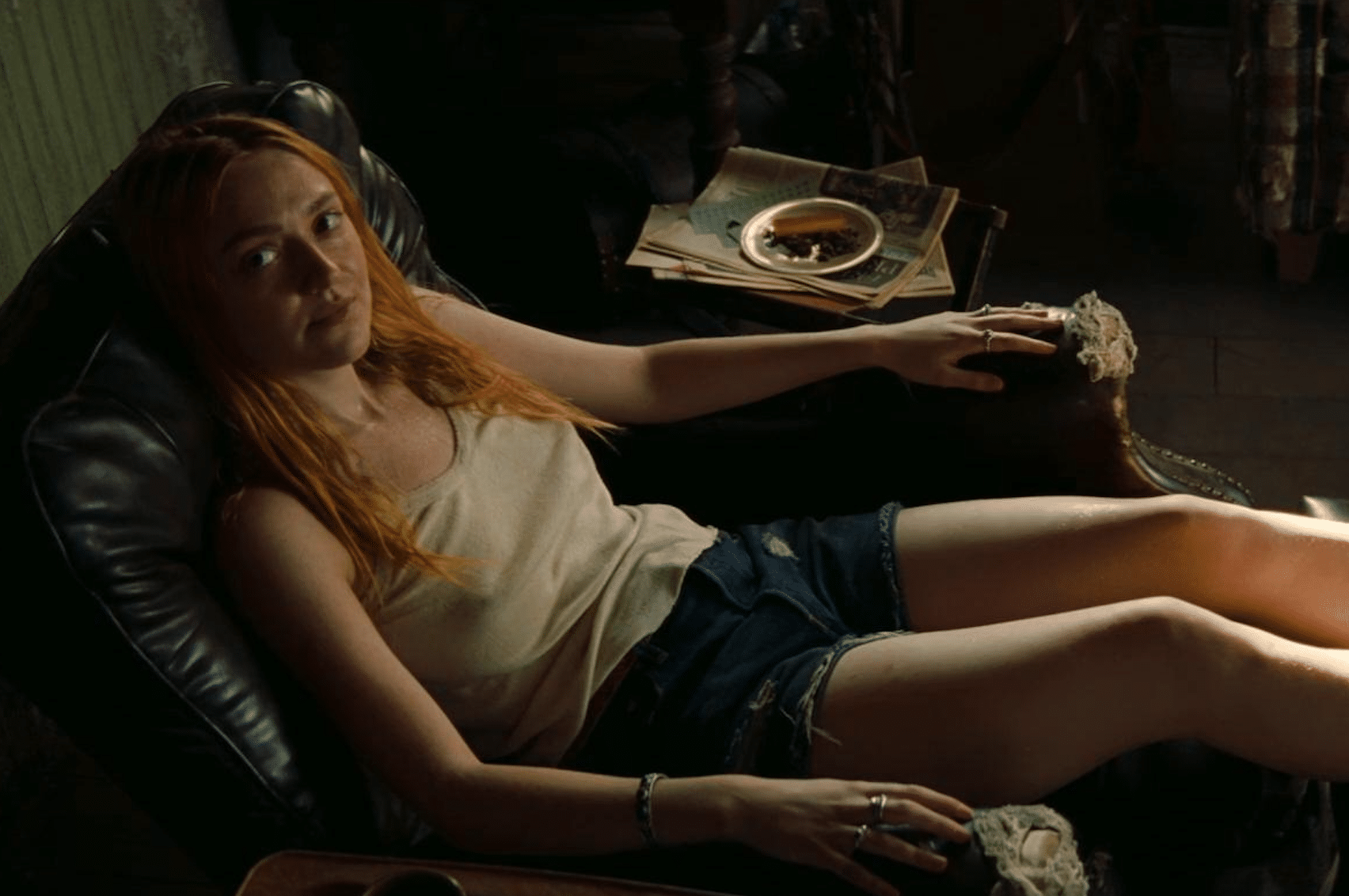
Also Read: 10 Powerful Films That Tackle Depression, Trauma, and Therapy
In a violent struggle, Polly kills the old woman in self-defense. Her dying words, “The box brought me to you,” confirm that none of this was random. Both women were trapped in a pattern designed to perpetuate their pain. And yet, the moment Polly decides not to obey, not to hurt herself, not to harm anyone, the sand timer runs out. She expects death. Instead, nothing happens. The curse loses power the moment she stops feeding it. The box was never about obedience; it was about surrender. By refusing to play, Polly reclaims control. She survives, not because she broke the rules, but because she stopped believing in them.
Were Lainie and Aly Really Dead?
In the final act, Polly reunites with her sister and niece, both alive and safe. The chaos she endured may have been an illusion, but the scars on her body are proof that some of it was very real. Bertino leaves the truth ambiguous: Was it all a manifestation of mental breakdown, or was it truly supernatural? Lainie’s house, now disordered and unkempt, mirrors Polly’s old life.
This suggests a partial merging of realities, as if the curse still lingers on the edges of the ordinary world. Polly’s relief is palpable. She sees her neighbor alive too, someone she believed had killed herself the night before. For the first time, Polly’s vision of the world seems anchored in reality again. But then the phone vibrates. She pauses. Instead of answering, she lights a cigarette. This small act, one of defiance rather than avoidance, marks her transformation. She may still be haunted, but she’s no longer afraid.
Why Did Tara Refuse to Trust Polly?
In the final moments, we learn that Tara does have the box. She has been chosen next. The spirits whisper to her, warning not to trust anyone, especially Polly. To Tara, Polly is the enemy, the trickster trying to pass her own curse. Tara, too, mutilates herself, sacrifices pieces of her body and soul, trying to appease the same unseen force. Her set of instructions differs slightly; she must offer something she wants. The rules evolve per victim, custom-tailored to their guilt and desires. This cyclical ending suggests that the curse adapts, feeding endlessly on new victims’ despair. Tara’s confusion mirrors Polly’s earlier state, indicating that the ‘loop’ has begun again.
Vicious (2025) Movie Ending Explained:
What Does the Box Represent?
The black box in “Vicious” serves as the physical representation of guilt and deterioration of the mind; a metaphor for depression and trauma. The black box feeds off of pain, compelling its victims to confront truths they have buried. In Polly’s case, the curse refers to her internal changes in her self-worth and survivor’s guilt, in the aftermath of her father’s death and her inability to ‘fix’ her life.
The tasks of the box are essentially a perverted adaptation of therapy, forcing introspection inherent to pain. When Polly withholds further participation, she breaks the psychological tether needed to keep the curse alive. Polly’s survival isn’t born from vanquishing the evil but from learning to live alongside it—enduring pain without letting it dictate her choices. Tara’s fate reminds the viewer that not everyone possesses that level of awareness. The cycle persists, devouring the vulnerable, one by one.
Bertino’s film ends where it begins: in silence, dread, and contemplation. It’s both true that the box can stand as a symbol of demonic nature, but it more poignantly sustains the human condition. An unrelenting orientation to absorb pain, punishing oneself, luxuriating in a deliberate profusion of pain, and seeking external acceptance of one’s predicaments. The curse is life; the damnation is guilt to endure. Life is a vicious loop of surviving, with the only path out being acceptance into a judgment that leads to punishment.

